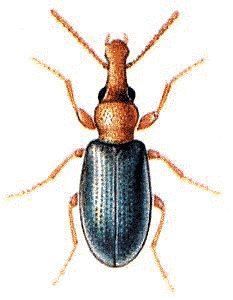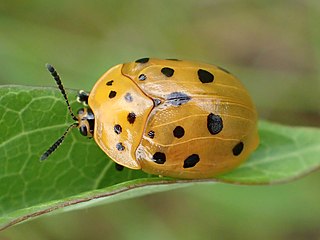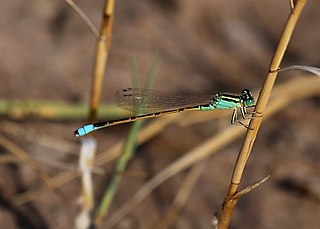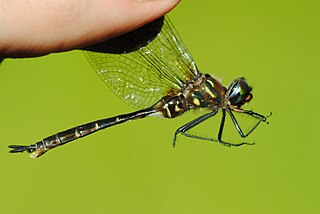
Sphaerites is a genus of beetles, the only genus in the family Sphaeritidae, sometimes called the false clown beetles. It is closely related to the clown beetles but with distinct characteristics. There are five known species, widespread in temperate area but not commonly seen.

Peripsocidae is a family of Psocoptera belonging to the suborder Psocomorpha. Members of the family are characterised by their absence of an areola postica in their wings. Many of the recently described genera are closely allied to Peripsocus. The family includes more than 300 species.

Odontoptila is a monotypic moth genus in the family Geometridae described by Warren in 1897. Its only species, Odontoptila obrimo, was first described by Druce in 1892. It is found in Central and North America.

Kateretidae is a family of short-winged flower beetles in the suborder Polyphaga. There are about 11 genera and at least 40 described species in Kateretidae. They are found worldwide except in New Zealand. Adults are anthophagous, feeding on flowers, while the larvae are spermatophagous inside the flower corolla.

Salpingidae or narrow-waisted bark beetles is a family of beetles, in the large suborder Polyphaga. The species are small, about 1.5 – 7 mm in length. This family is worldwide distributed and consists of about 45 genera and 300 species.
Peripsocus consobrinus is a species of Psocoptera from Peripsocidae family. It is known from the type locality in Somerset, Britain I. and Scotland. The species is 3.5 millimetres (0.14 in) long with dark forewings.

Peripsocus is a genus of stout barklice in the family Peripsocidae. There are more than 250 described species in Peripsocus.
Peripsocus alachuae is a species of stout barklouse in the family Peripsocidae. It is found in North America.
Neoconocephalus robustus, known generally as the robust conehead or crepitating conehead, is a species of conehead in the family Tettigoniidae. It is found in North America.

Chelymorpha cassidea, known generally as the Argus tortoise beetle or milkweed tortoise beetle, is a species of leaf beetle in the family Chrysomelidae. It is found in the Caribbean and North America.
Carphoides inconspicuaria is a species of moth in the family Geometridae first described by William Barnes and James Halliday McDunnough in 1916. It is found in North America.

Ischnura barberi, the desert forktail, is a species of narrow-winged damselfly in the family Coenagrionidae. It is found in North America.

Somatochlora walshii, the brush-tipped emerald, is a species of emerald dragonfly in the family Corduliidae. It is found in North America.
Psallus falleni is a species of plant bug in the family Miridae. It is found in Europe including the north Mediterranean basin then east across the Palearctic to Siberia and China. It occurs as an adventive species in North America. Psallus falleni lives on birches. The imagines occur relatively late from July to September

Melanoplus sanguinipes, known generally as migratory grasshopper, is a species of spur-throated grasshopper in the family Acrididae. Other common names include the lesser migratory grasshopper and red-legged grasshopper. It is found in the Caribbean and North America.
Peripsocus maculosus is a species of stout barklouse in the family Peripsocidae. It is found in North America.
Peripsocus madescens is a species of stout barklouse in the family Peripsocidae. It is found in Central America and North America.
Chaoborus astictopus, the Clear Lake gnat, is a species of phantom midges in the family Chaoboridae. The older larvae is commonly found in the profundal zone of lakes during the day and in the open waters at night, suggesting that they are negatively phototactic.
Animal Ethics is a nonprofit organization formed to promote discussion and debate around issues in animal ethics and to provide information and resources for animal advocates. They also do outreach work in several countries on the issue of speciesism. Their aim is to create a world where moral consideration is extended to all sentient beings. The organization's website covers topics such as speciesism, sentience, veganism and wild animal suffering and has content translated into several languages.








